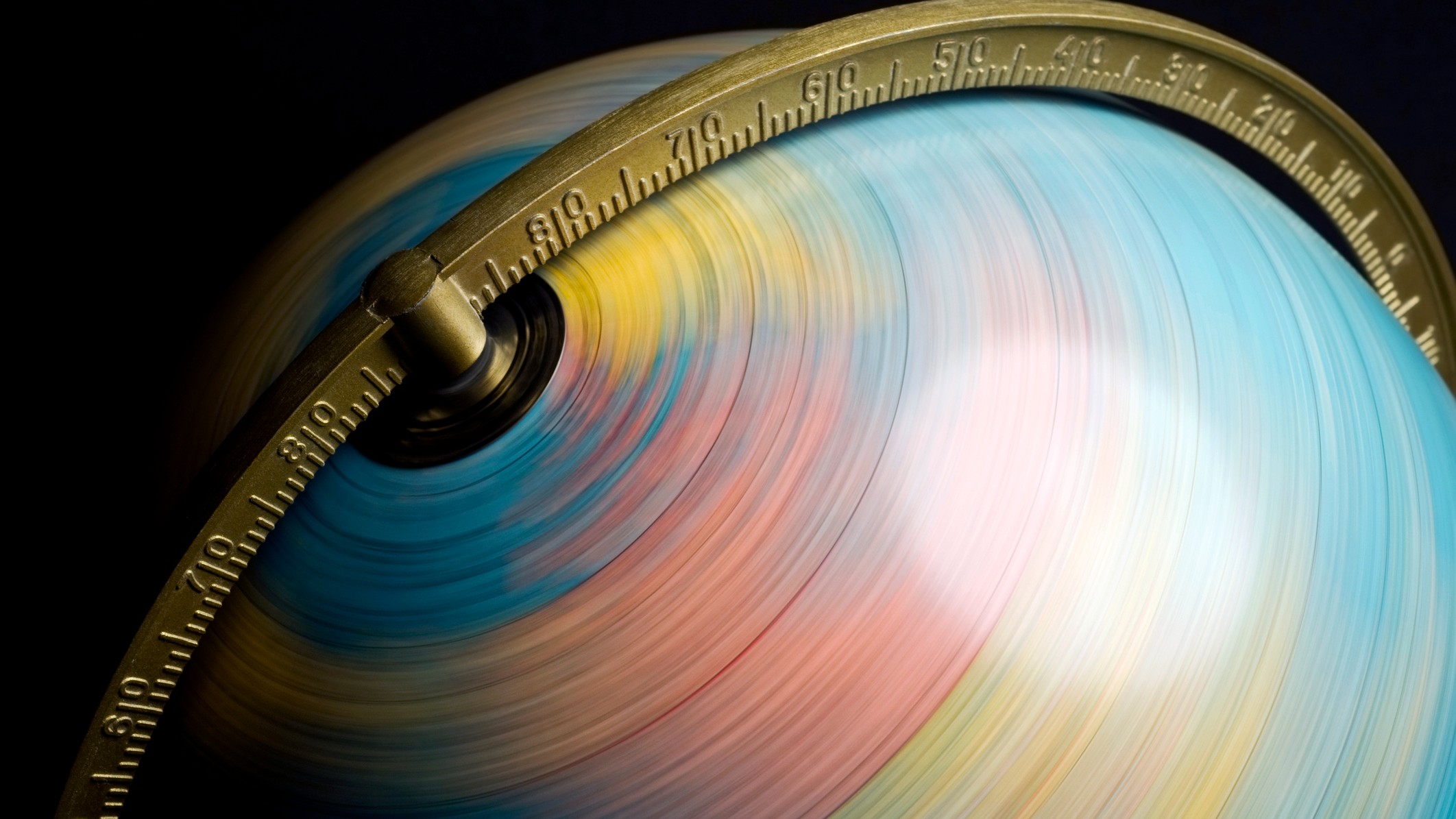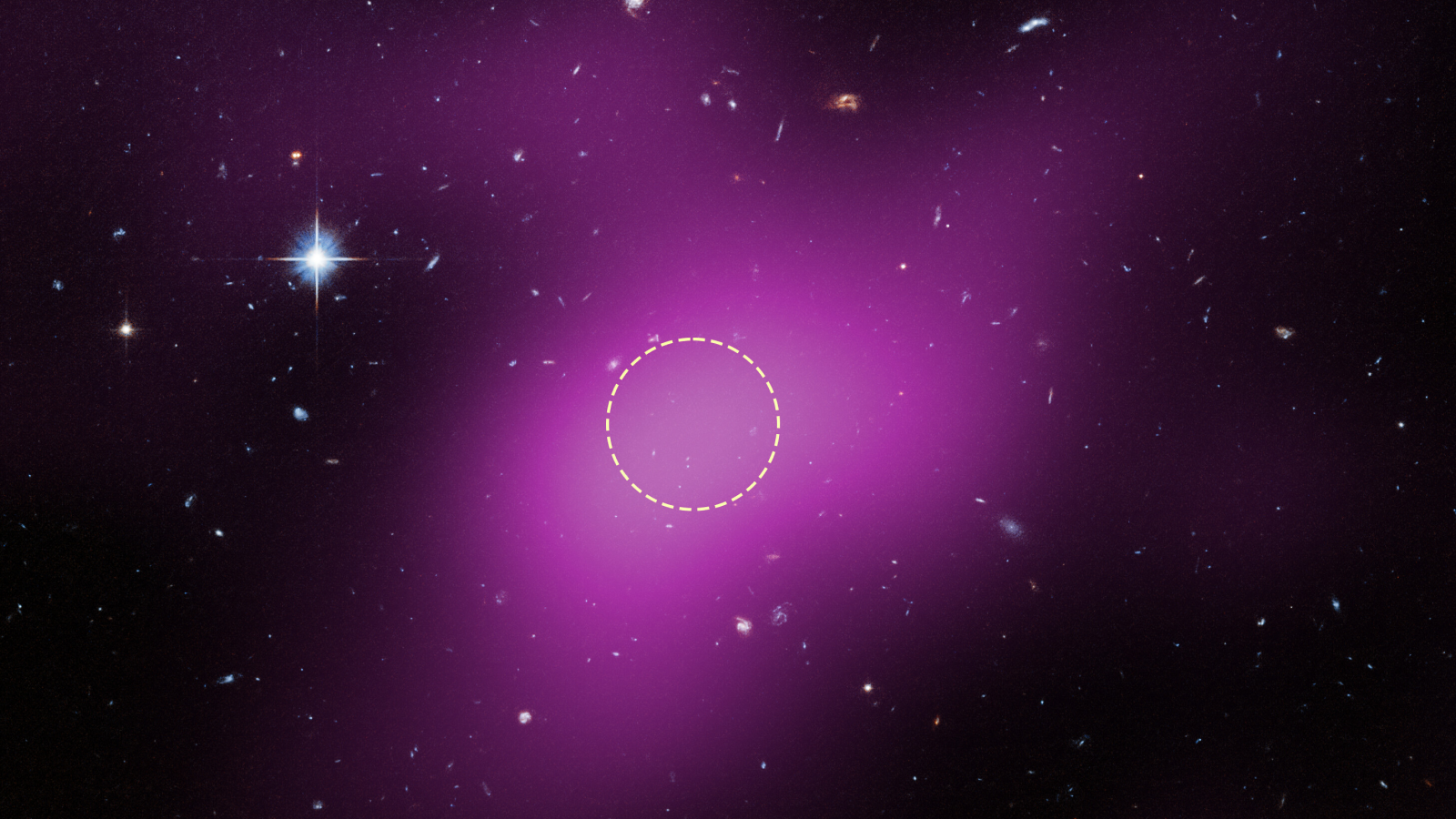Earth just had a freakishly short day, but the fastest day of the year is yet to come
July 9 was unusually short thanks to changes in how fast the Earth is spinning. But two other days this summer are expected to be even shorter.

Wednesday (July 9) is predicted to have been an unusually short day, lasting 1.3 milliseconds less than average, as the Earth spun faster on its axis. However, even shorter days are yet to come, with July 22 and Aug. 5 expected to lose 1.38 and 1.52 milliseconds, respectively, according to timeanddate.com. But why are some days getting shorter this summer, and how will it affect us?
Why is Earth spinning faster?
A day on Earth lasts roughly 86,400 seconds, or 24 hours — the time it takes for the planet to fully rotate on its axis. But the speed of this rotation depends on many factors, including the positions of the sun and the moon, and Earth's gravitational field.
On July 9, July 22 and Aug. 5, 2025, the moon will be at its farthest from the equator, which changes the impact of its gravitational pull on Earth's rotation. Think of Earth as a spinning top — if you were to put your fingers around the middle and spin, it wouldn't rotate as quickly as if you held it from the top and bottom. A similar thing happens with Earth: With the moon closer to the poles, Earth begins to spin faster, making our days shorter than usual.
Live Science contacted the International Earth Rotation and Reference Systems Service (IERS) — the organization responsible for maintaining global time and reference frame standards — to confirm exactly how many milliseconds we lost on July 9.
How does losing 1.5 milliseconds affect life on Earth?
For most of us, the loss of a millisecond or two goes totally unnoticed. However, computers, GPS, banking systems, large telescopes and electricity networks rely on incredibly accurate synchronization to operate. For these systems, every millisecond counts.
"We're transmitting data so quickly, and it all needs to be time tagged, so computers know what data goes where," David Gozzard, a senior research fellow at the University of Western Australia who specializes in precision measurement and satellite laser communications, told The Guardian.
Get the world’s most fascinating discoveries delivered straight to your inbox.
Such precise measurements are synchronized to a global reference time called Coordinated Universal Time (UTC).
- A basic modern computer carrying out millions of instructions
- Data traveling roughly 180 miles (300 kilometers) through fiber-optic cables
- A bullet from an AK-47 traveling about 3.3 feet (1 meter)
- Light traveling 280 miles 450 km
- An earthquake p-wave traveling 33 feet (10 m)
"[UTC] is a worldwide reference based on over 400 atomic clocks that are operated in the approximately 80 contributing timing institutes," Dirk Piester, head of Time Dissemination Group 4.42 at Physikalisch-Technische Bundesanstalt (PTB), Germany's national meteorology institute, told Live Science in an email.
PTB is responsible for determining the legal time in Germany and is one of the roughly 80 institutes around the world that contributes to calculating UTC.
Unlike atomic clocks, which are capable of calculating time on the scale of a billionth of a second (nanoseconds), Earth's rotation can be irregular. As a result, UTC is largely independent of the length of the day as determined by Earth's rotation, Piester said.
"This means that the most accurate time-keeping instruments that we use to realize UTC do not take the current length of day into account in their day-to-day operation," he said. "The length of the seconds of our clocks corresponds to the definition of the base unit of time in the International System of Units."
Variations in Earth's rotation often cancel each other out or are too small for us to notice. But over time, a millisecond here and a millisecond there can add up. When this happens, global timekeepers at the IERS add in a "leap second."
"If there is a constant deviation of the day length from UTC, then a leap second is applied in UTC," Piester said. "This is to ensure that the time of day as given by UTC corresponds to the time as given by the Earth's rotation within one second."
However, in 2022, scientists voted to abolish the leap second by 2035, due to the disruptions they cause to systems that rely on precision timekeeping.
Are days on Earth getting shorter?
Over the past couple of billion years, Earth's rotation has actually been slowing, which has caused our days to get longer. For example, researchers in 2023 found that, between roughly 1 billion and 2 billion years ago, a day on Earth was only 19 hours long. Scientists think this is largely due to the gradual drift of the moon away from our planet, which has made the moon's gravitational pull weaker over time and caused Earth to spin more slowly on its axis.
However, since 2020, scientists have noticed that Earth has started spinning slightly faster.
"We now have slightly shorter days than in the last 50 years," Piester said.

Pandora is the trending news editor at Live Science. She is also a science presenter and previously worked as Senior Science and Health Reporter at Newsweek. Pandora holds a Biological Sciences degree from the University of Oxford, where she specialised in biochemistry and molecular biology.
You must confirm your public display name before commenting
Please logout and then login again, you will then be prompted to enter your display name.
 Live Science Plus
Live Science Plus





